Down to just one breeding pair in 1970; now 460!
By Gordon Woodworth, Chronicle News Editor
Bald eagles — America’s symbol — have made a big comeback in the Empire State. “The bald eagle population in New York has just exploded,” wildlife biologist Scott Crocoll tells The Chronicle.
“We had gotten down to one pair in 1970, on Hemlock Lake in western New York…and they weren’t a healthy pair. They weren’t producing young at that point.” Now? “In 2017, as of two months ago, we are up to 460 breeding pairs across the state,” said Mr. Crocoll, who is in his 37th year with the state’s Department of Environmental Conservation.
He said, “In 1987, when we originally put these objectives together, no one had any idea that we would reach the point we’re at now. Things have gone so well….
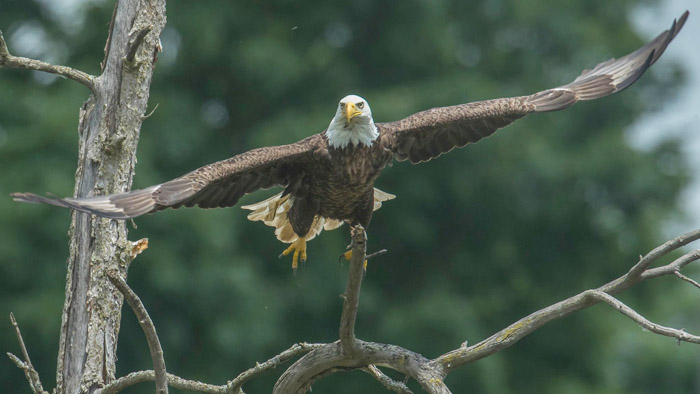
“The bald eagles and the peregrine falcon have been two of the biggest success stories in New York State and the nation. The recovery has gone better than any of us could have dreamed.”
Lake George has had at least one nesting pair several years. A nest on Speaker Heck Island has produced chicks for several summers, but was inactive this spring, Mr. Crocoll said. But “there’s another new pair on Lake George. The nest is on a different island. There’s plenty of reason to think that there’s actually more than two pair on that lake.”
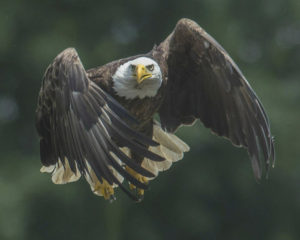
In Washington County, along the Hudson River, there was at least one nesting pair this spring. Eagles are seen frequently on Sacandaga Lake, in the Adirondacks and even on the Mohawk River in Schenectady.
“We are seeing so many bald eagles, that folks are finding new nests for us,” Mr. Crocoll said. To notify DEC about a new nest, call Mr. Crocoll at 402-8957 or email fw.information@dec.ny.gov.
NYS effort began after DDT ban
The bald eagle’s comeback in New York began after the pesticide DDT was banned nationwide in 1972. That’s when DEC wildlife biologists started “hacking” young eagles acquired from other states.
“We would build cages and put these young eagles into the cages and then fed them in a manner where they couldn’t see who was feeding them,” Mr. Crocoll said.
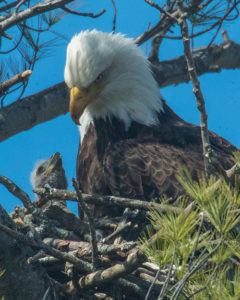
“We would basically feed them until they were about ready to fly and then we’d open up the cages and let them fly out on their own and continue to leave food in the boxes for them until they became independent.”
He said, “We did that well into the 1980s. We had these hack facilities in three different places in the state. We had one up north in the Adirondacks, one in Montezuma National Wildlife Refuge and one in a reservoir near Albany.
We raised birds that way for at least 10 years until we reached a point where we had breeding going on and we actually had 10 occupied nests across the state and we stopped hacking. That was in the late 1980s.”
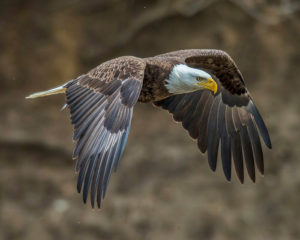
No longer ‘endangered’; ‘threatened’
DEC continued to monitor and protect the nesting sites and “the population continued to expand far beyond what we had hoped it would do,” Mr. Crocoll said.
“We reached a point where we got to 20 occupied nests, and then we downgraded the eagle in New York from endangered to threatened.”
The population exploded from there. In 2010, there were 230 nesting pair across the state. In 2017 there are at least 460.
Mr. Crocoll said, “Now we still run an annual survey, much of it by aircraft, particularly helicopters, across the state checking for activity of the nests. We don’t cover all of the nest sites, just a certain portion of them.
“We still are actively involved with protecting individual sites via permitting processes. In other words, if construction companies or individual land owners need a permit for some activity on their property and there happen to be bald eagles there, we still interact with the private landowners on those projects and recommend certain things to maintain the eagle activity.”
Info: dec.ny.gov.
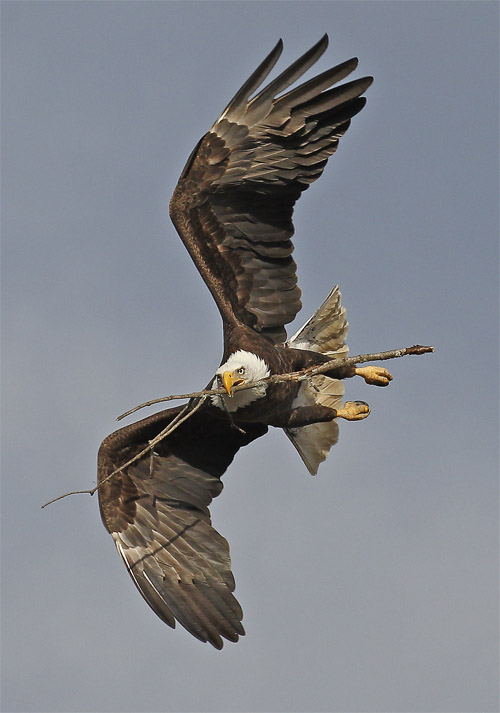
Copyright © 2017 Lone Oak Publishing Co., Inc. All Rights Reserved.
 Glens Falls Chronicle Serving the Glens Falls/Lake George region; Warren, Washington and northern Saratoga counties since 1980
Glens Falls Chronicle Serving the Glens Falls/Lake George region; Warren, Washington and northern Saratoga counties since 1980

